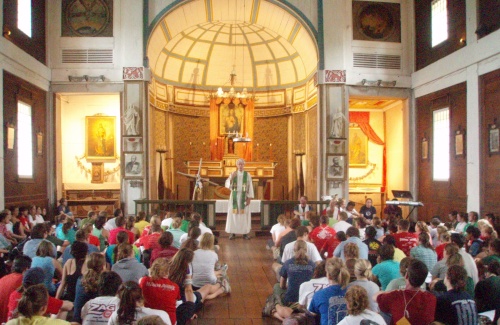
"Every fall, a few hundred Gonzaga University students and faculty members make a religious pilgrimage. They ride buses to a valley just beyond the Coeur d'Alene Mountains in north Idaho. Then, says Gonzaga professor Scott Coble, they walk nine miles to Idaho's oldest building. Father Scott Coble: "It's this awe-inspiring, almost Italianate-looking church on this little knoll on the flat in Idaho, of all places." Coble is referring to the Cataldo Mission, named after a Jesuit missionary. Father Joseph Cataldo and his priests came to this valley in the 1840s to minister to the Coeur d'Alene Indians. Marc Stewart: "They brought the Catholic faith and the Coeur d'Alenes embraced that faith." Marc Stewart is a spokesman for the tribe. Marc Stewart: "They built a mission down near the river and then later to its current location. So it became a very cultural, religious place for them." The church has been refurbished and is now a historic museum, the centerpiece of a state park. It's visible from Interstate 90. Inside, you can hear Coeur d'Alene tribal elder Lawrence Aripa talk about the mission. Lawrence Aripa: "When I think of the way it was built, I can feel just nothing but pride because of how they suffered and how they worked." Father Scott Coble says both the tribe and the Jesuits consider this place sacred. That's why some people consider what's happening just across the highway as a desecration. Heavy machines are moving mounds of contaminated dirt and huge rocks from another part of Idaho's history. It's mining waste and these crews are building the East Mission Flats Repository. It's a new dump site for the contaminated soil that's scooped out of yards and fields in mining towns up and down this valley." Get the Story:
North Idaho Repository Proceeds Despite Concerns (KPLU 11/17)